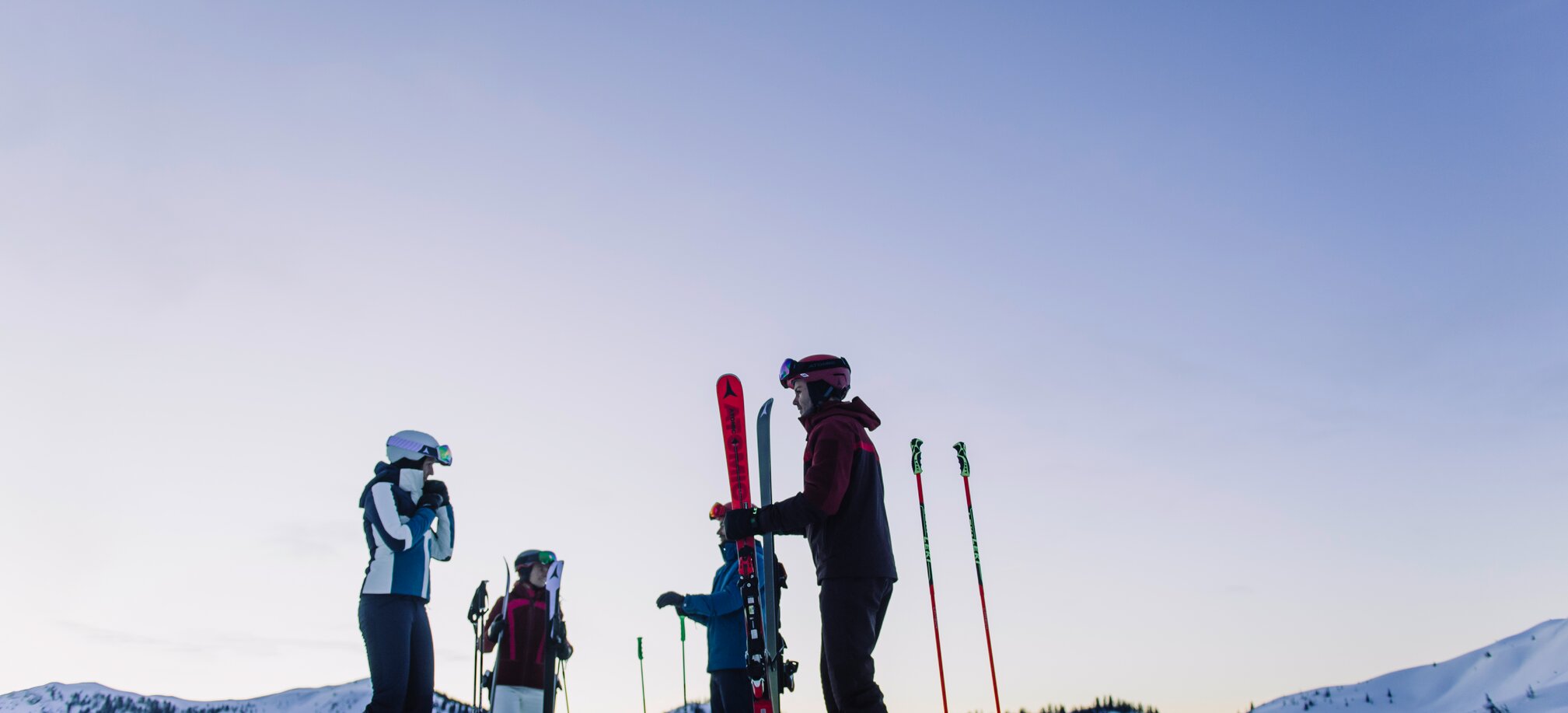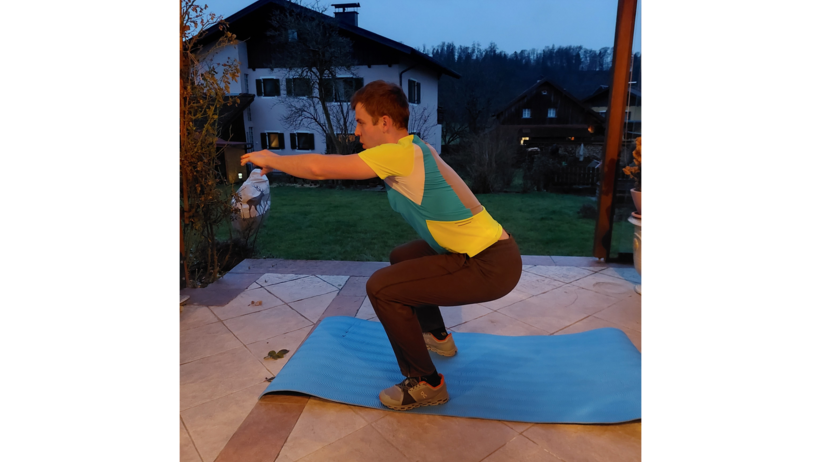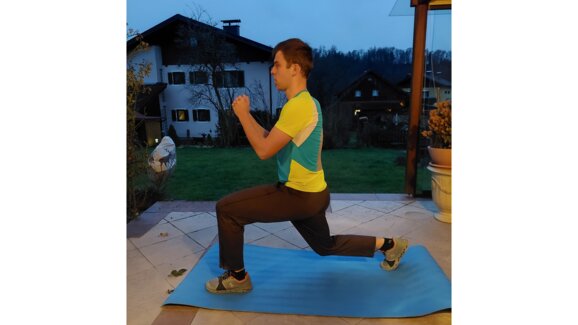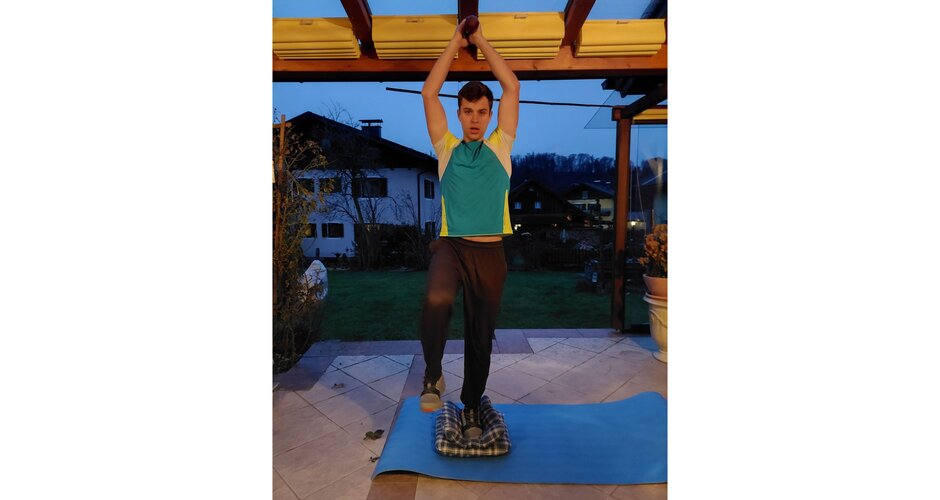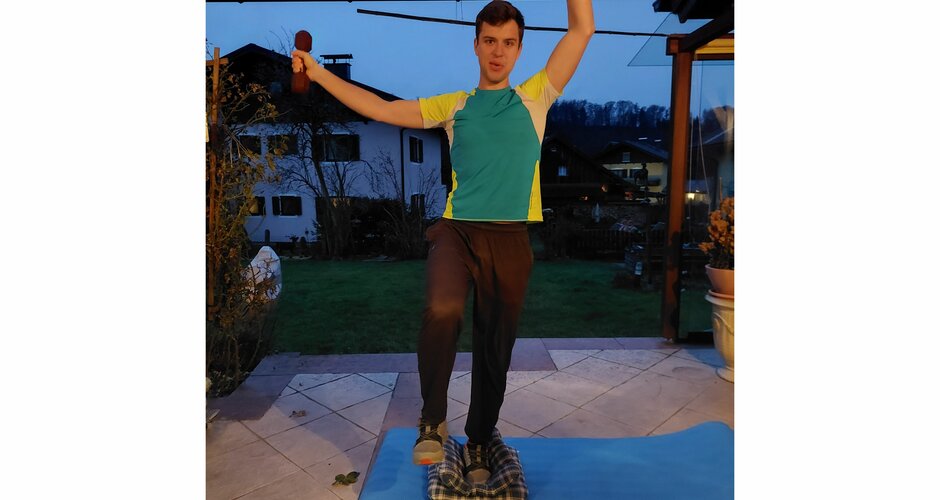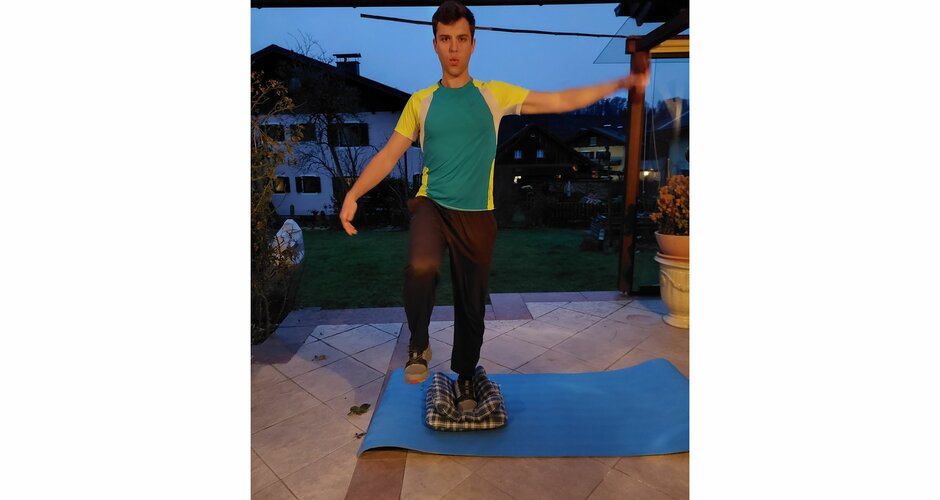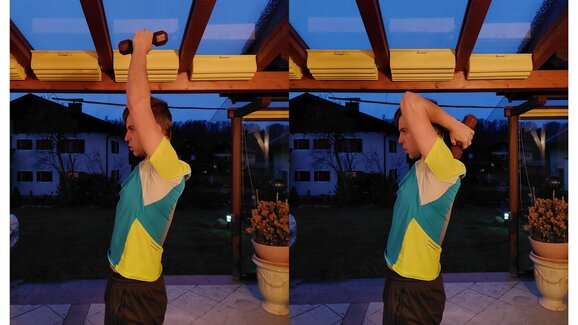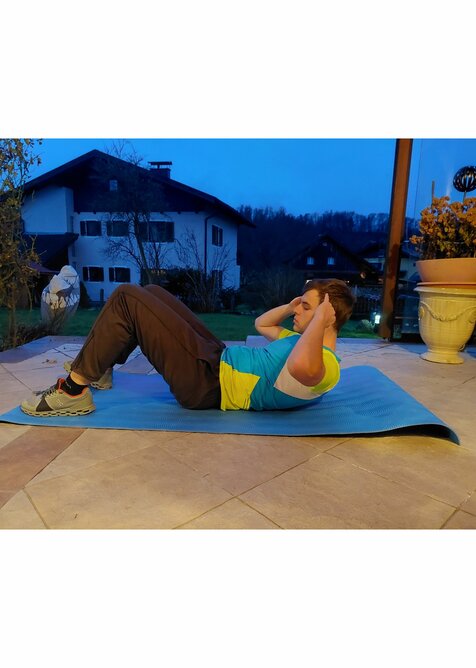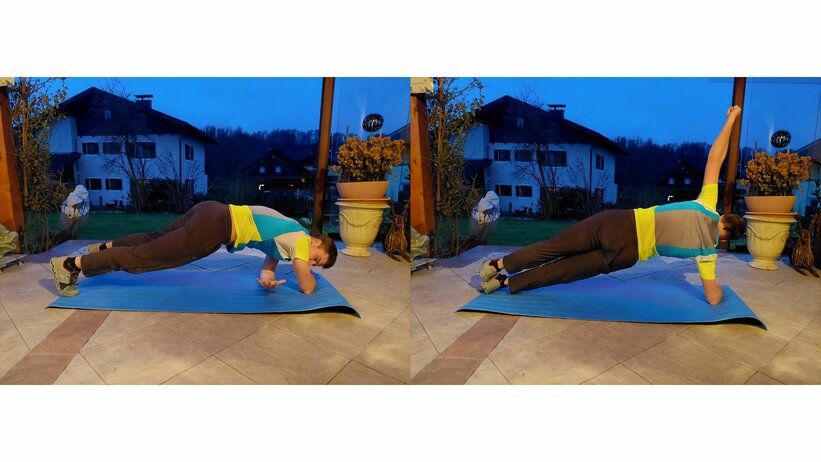Ski touring – sports exercises
When it comes to ski touring, it is important to keep in mind that going uphill is not enough. Strength and condition must always be divided up for both the ascent and the descent. The thigh muscles are very important throughout the tour, but strength alone is not enough - endurance is what counts.
Personally, it helps me the most if I walk a lot continuously throughout the year – uphill, downhill and preferably every day or two. Then I get my body used to a constant walking movement and also my lungs to the alternating warm and cold air.
Walking uphill and downhill
If you want to introduce your body to ski touring for a short time, you should go uphill quickly for half an hour at least two or three times a week and then quickly downhill again. This stimulates your leg muscles and improves your condition.
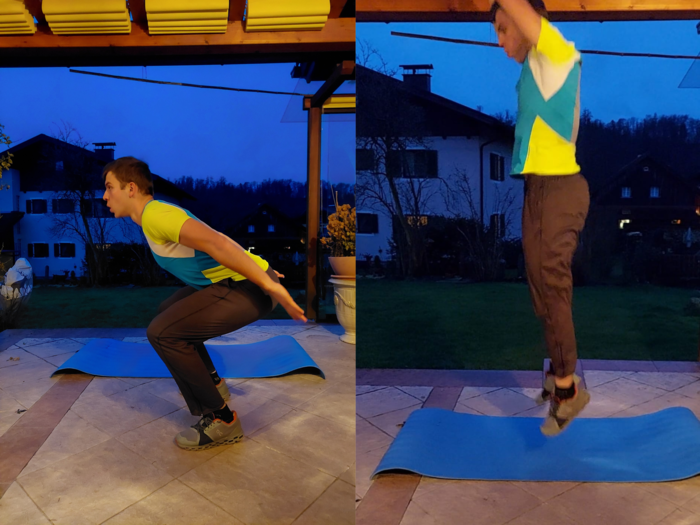
Jumping exercises
As a jumping exercise, if you go to the gym, I recommend putting a large box against the wall and jumping up and down from a standing position on the box. The goal is to land as quietly as possible. For jump boxes, the standardized height starts at around 40 cm. If you are doing the exercise for the first time, start very low and then increase the height. If you want to try it out at home or don't go to the gym: You can jump onto a couch or an existing box, but be careful: Make sure everything is stable beforehand and nothing can slip.
Stability exercises
Stand on one leg on an (Airex) cushion and place a small weight (from 2.5 kg – depending on personal fitness and strength) over your head from side to side. It is important that you stand as well as possible on your supporting leg, distribute your weight evenly on your heels and balls of your feet and wobble around as little as possible.
Skiing sport exercises
Time for an Activity-pantomime-exercise: show a person which is skiing. Did you crouch down and put your hands in front? Then you already have the first exercise to prepare for the ski season.
As a second exercise, I recommend the standing scales - simply stand up relaxed and shoulder-width apart and then lift one leg and push it backwards. Extend your torso and arms horizontally forward. It's important to keep your back straight and bend your knees slightly with the one leg you're standing on - this puts less strain on your joints and more on your muscles. It is best to do this 10 times per side and hold it for 5 seconds each time.
Mountain climbers: To do this, you get into a plank position and alternately pull one knee to your chest without moving too much out of the plank position. The speed is depending on how your own condition allows and whether you want to train more strength or condition. When it comes to strength, do the exercise as slowly as possible, and when it comes to conditioning, do it as quickly as possible.
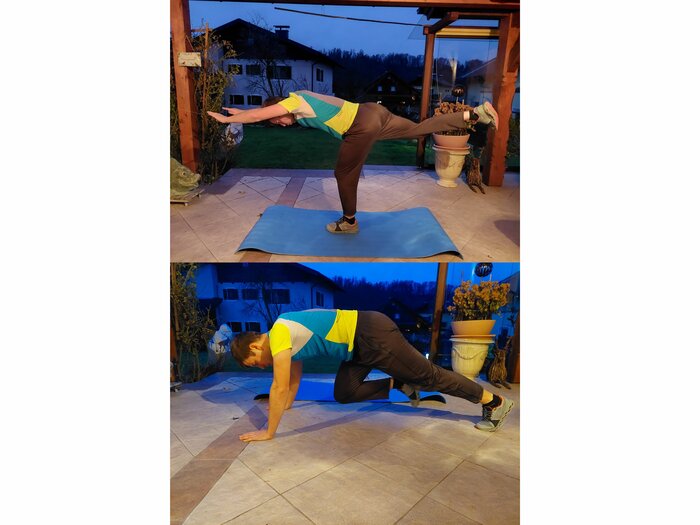
Sometimes when skiing you have to react quickly, or a bump comes your way and you make an unexpected jump. So I also recommend training quick stop movements – like in soccer. Just run forward and quickly stop with one foot and run back again. This will strengthen your ligaments, but always be careful!
For jump training, you can do the same exercise with the jump boxes as described for ski touring, or you can stand with your legs apart, bend your knees very far and then jump as high as possible with all your strength – keeping your body tense.
As you can see, there isn't that much difference between the two sports - focus on the legs, but don't forget the rest of the body. When ski touring, your arms, your back and, above all, your stamina need more attention and training - because with a fit body every sport is much more fun!
